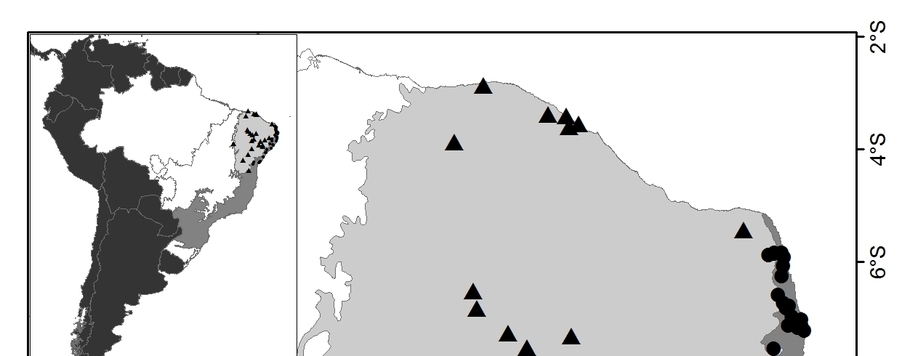
Geographical ecology of Tantilla melanocephala (Squamata: Serpentes: Colubridae) in a Neotropical region
Studying species with wide geographical distributions allows the evaluation of the effects of environmental variation and phylogenetic constraints on the ecology of these organisms. The snake Tantilla melanocephala is widely distributed across South America in different environments (Amazonia, Atlantic Forest, Cerrado, Caatinga, and Chaco). We compared the morphology, diet, and reproduction of T. melanocephala inhabiting the northeastern Brazil in Atlantic Forest and Caatinga. In total, 161 individuals were collected from the Atlantic Forest and 88 were collected from Caatinga, and all had similar morphological and ecological traits. There was no sexual dimorphism within the biomes, and no morphological differences between individuals from both biomes. The species fed mainly on chilopods, and there were a few differences in the centipede species consumed in each biome. The volume of consumed prey did not differ between biomes, and clutch size was also similar (1–2 eggs), with differences during the egg-laying period reflecting environmental differences. The species has a continuous reproductive cycle in the Atlantic Forest and a seasonal reproductive cycle in Caatinga. Similarities in the morphology and ecology of T. melanocephala in the Atlantic Forest and Caatinga suggests that the species exhibits a high degree of phylogenetic conservatism.






